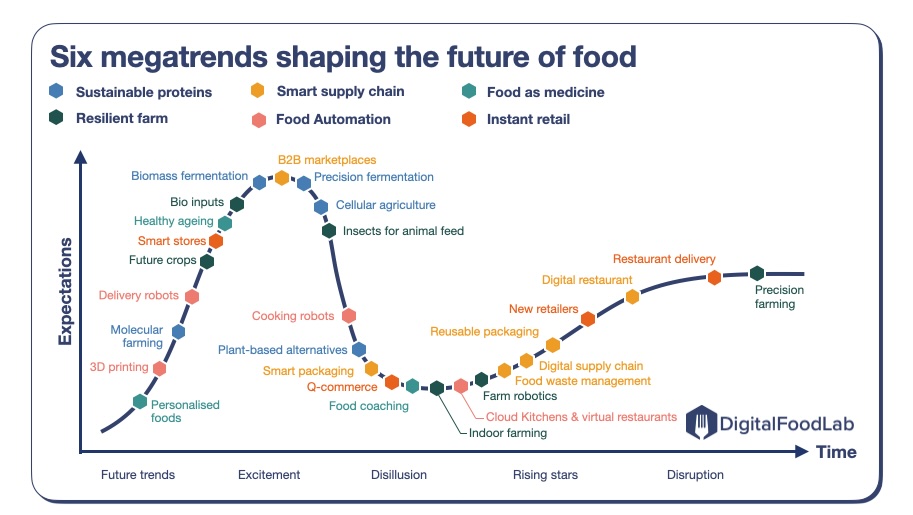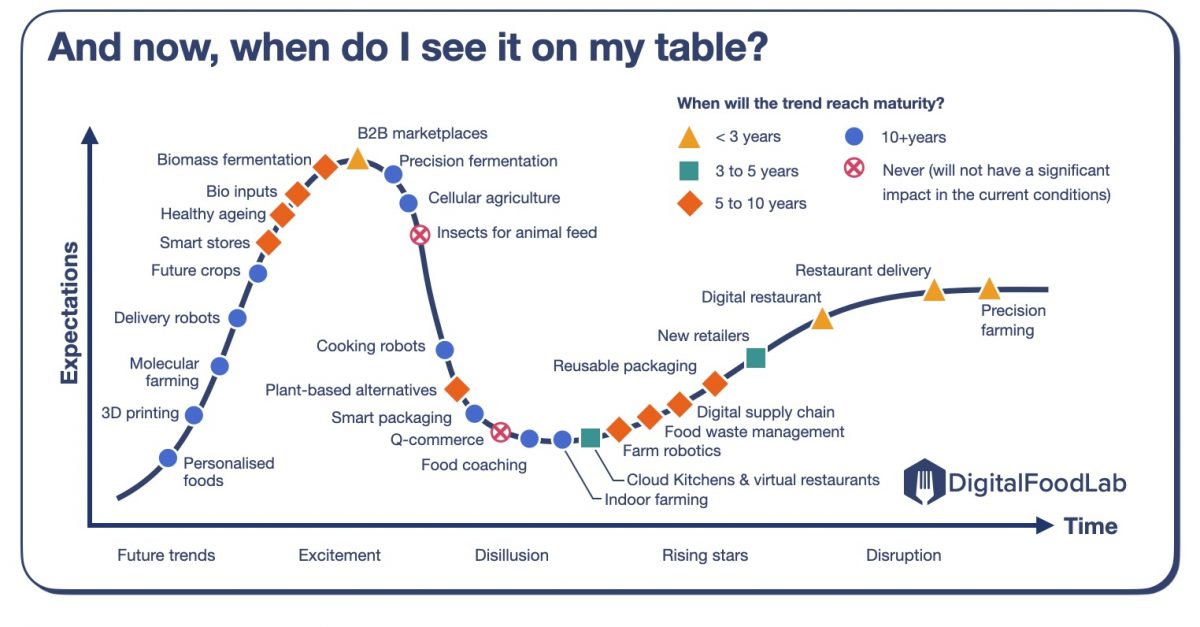I am glad to share with you the annual update of DigitalFoodLab’s yearly report on trends shaping the future of food. You can download the report here.
We have identified 28 trends, grouped into six megatrends:
- Sustainable proteins: to develop new, more sustainable sources of proteins and ingredients for the food industry.
- The resilient farm: making farming more sustainable and resilient to climate change.
- The Smart supply chain: digitising the food supply chain to increase efficiency while reducing waste.
- Food Automation: plan for a future where robots will cook and deliver part of our food.
- Food as medicine: identifying solutions enabling us to be at our best through what we eat.
- Instant retail: to access food products instantly.
As for each year, we position the trends on the following innovation curve:
- A new technology appears, starts getting some attention, and eventually becomes a « trend » (a combination of an ecosystem of startups, a set of technologies or new business models, and B2B or B2C needs).
- At some point, the technology starts to work, and some initial results catch the attention of the public (investors, corporations, consumers…) and create a peak of excitement.
- The initial excitement fades as either the technologies or business models appear to work at scale.
- Some trends re-emerge as legacy or new ventures find a way to address these challenges.
- We enter the final stage, where the trend is now becoming something obvious and seen by every observer.

For the first time in the five years we have been doing this report, we have a situation where trends are scattered all over the curve. This explains the schizophrenia of the innovation ecosystem where, at the same time, you have whole ecosystems going bankrupt while others are thriving.
Looking at this graph, we can only have the impression that the next year will be somewhat complicated for the overall FoodTech ecosystem, except for a few topics that will either jump from excitement to productivity (unlikely) or see a fast adoption rate (primarily those in the disruption stage).
Based on the experience of past trends, notably in other areas, we have added an estimation of the time it will take for the trend to reach maturity (when 20 to 30% of the targeted market has adopted it).

I want to point out that it is an optimistic estimation, not a prediction (I am still looking for a well-functioning crystal bowl). The aim is to provide an insight into what to expect for the future of food and how to plan for it.
If you have any questions on the contents or how you and your company could move toward the future of food, please contact us! We can plan a call and a dedicated presentation of how these trends will impact your business.







